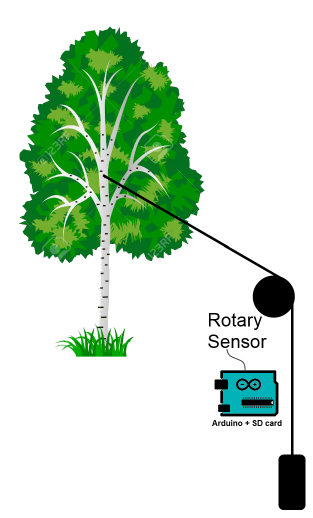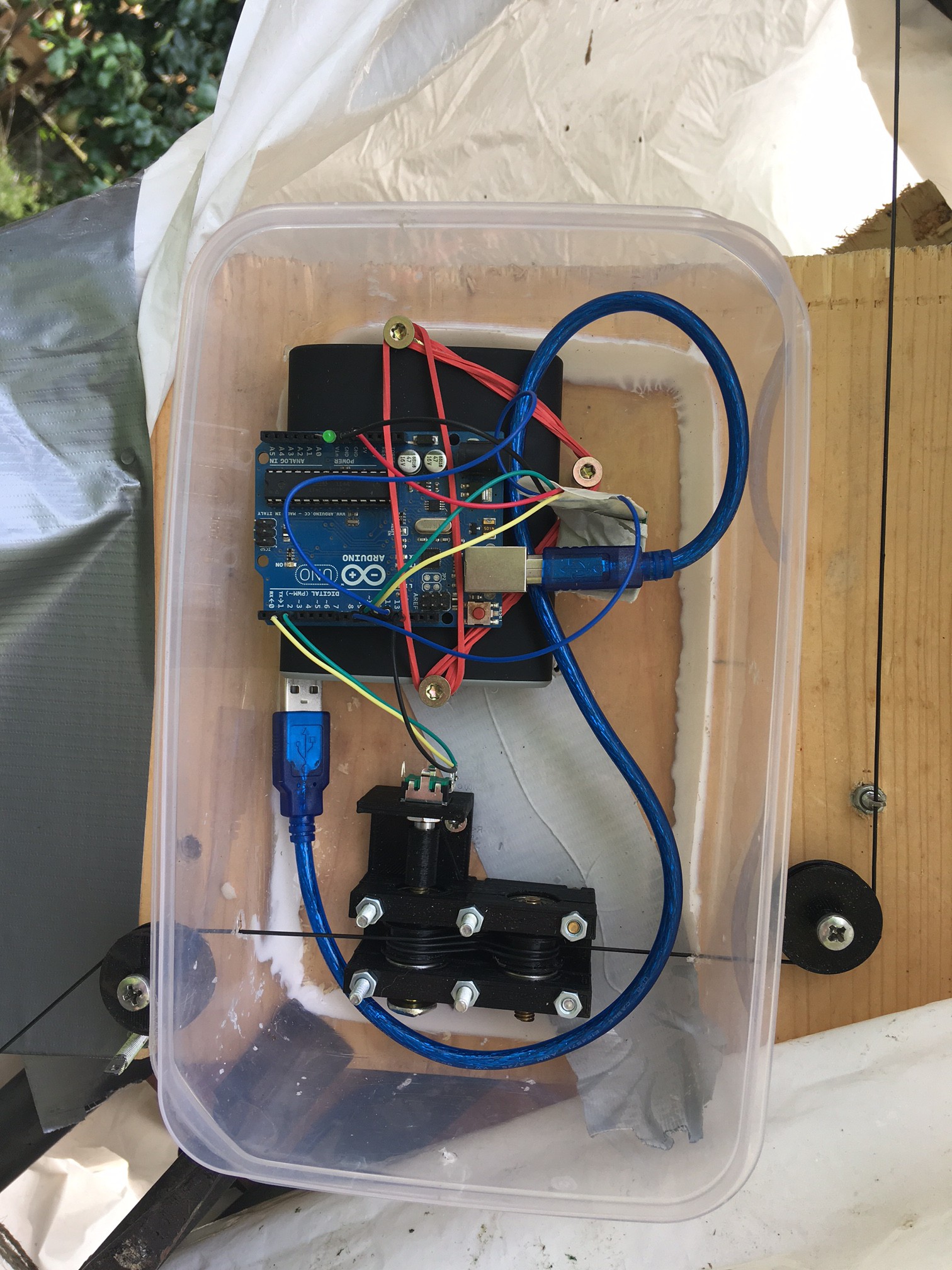Today I tied a Dyneema fishing rope with 80kg of max draw weight to the big birch in our garden. The birch is around 15m high and the point where the string is attached is at about 8m. The string goes then around two spools, one is attached to a rotary encoder, and to a 300gram weight which gives the string the tension. The data from the rotary encoder is then collected by an Arduino Uno and saved with a timestamp onto a SD card. There are 5 datapoints per second collected. The overview:
 The spools are sitting on ballbearings, everything is 3D-printed:
The spools are sitting on ballbearings, everything is 3D-printed: The whole setup is encapsulated in a lunch box and screwed to a wooden plate. The Arduino is connected to a power bank with 10000mAh which should provide power for several days.
The whole setup is encapsulated in a lunch box and screwed to a wooden plate. The Arduino is connected to a power bank with 10000mAh which should provide power for several days. Cant wait to see the first data! Unfortunately there is not much wind at the moment.
 Tobiwan
Tobiwan
Discussions
Become a Hackaday.io Member
Create an account to leave a comment. Already have an account? Log In.
Hey there, have you found any interesting data yet?
Are you sure? yes | no
Hey, sorry it took so long to answer, I was on vacation :) I have two full days of data to analyze, I will do that next week and let you guys know about the results.
Are you sure? yes | no
Right! I should have noticed right away. But I only saw it after writing my comment and even then I did not fully get how it solves the issue. After thinking a bit more it is clear that the string is straight on the rollers and slanted in between.
Are you sure? yes | no
Looks good. Your "spools" may be a bit short to take up the string walk. With each rotation the string will walk one string width as it is wound as a spiral. This can't really be avoided unless you roll up the string on top of itself. The way to deal with this is to make the rollers wide enough to allow the string to walk up and down without hitting the wall or walking off the roller.
But I have no real idea how much string movement you are expecting. May be the rollers are just wide enough already.
Are you sure? yes | no
I was aware of that problem, so there are two "spools". They are configured like a lifting block, so there is no string walk :) Look closely at the photo.
Are you sure? yes | no